(For more on the tour, and its background.)
BARBERTON, Ohio — The 330-foot brick and mortar barn with ceramic tile roofing on Barberton’s east side gives the impression of something historic.
A castle or some type of mansion would be a good guess. But instead, it’s a pig barn, one of 35 farm buildings that once made up the famed $7 million Anna Dean Farm.
That’s how much its owner, businessman and entrepreneur O.C. Barber, invested to build the barns in the early 1900s. Today, it would cost the equivalent of about $105 million.
Altogether, the farm housed 1,000 head of milk cows, 50,000 chickens, 50,000 ducks, 300 hogs and comprised 3,500 acres. Some 225-plus farm workers tended to the livestock and field work.
The farm would be considered a large operation by today’s standards. But in the early 1900s, it was one of the largest in the world.
A question as big as the farm is “why?
Ultimate farm
Steve Kelleher, president of the Barberton Historical Society, which is working to preserve the eight remaining farm buildings, said it had to do with Barber’s vision of the ultimate farm — one that would help end world hunger through industrialized agriculture.
“He (Barber) thought that by upping production, you could solve hunger all over the planet,” Kelleher said. “He was trying to apply business production to farming.”
The farm was in operation from about 1907-1921 and was known as one of the largest, most innovative and prolific in the world.
It helped that Barber was a prolific businessman, having founded the Diamond Match Company, as well as the city of Barberton. In the 1880s, Diamond Match controlled 85 percent of the nation’s match market.
“Barber’s name was like gold,” Kelleher said.
Tall and stout
His wealth was ultimately what made the farm possible. But, according to Bernie Gnap, another historical society member, the 6-foot, 6-inch Barber was as bold and sharp as he was wealthy.“This was world-renowned back in its day,” Gnap said. “He (Barber) literally created this out of his own mind.”
What Barber created, Kelleher and Gnap are working to preserve. They co-authored a book on the farm’s history — Construction of O.C. Barber’s Anna Dean Farm — and they’ve each spent more than half of their life trying to restore the farm.
Gnap, 64, and Kelleher, 60, are preparing for the farm’s annual tour, which will be open to the public May 19, at 1:30 p.m. It’s your one chance to see the restoration of the property, which becomes a little more complete each year.
The Barberton Historical Society owns six of the remaining buildings (all on the tour) and is working to restore them as accurately to their original use as possible. One of the buildings — the former poultry barn — has been retrofitted to become a top-notch daycare facility called “All About Kids.”
“To us, this was a good re-adaptive use,” Kelleher said.
Still in use
Another barn, known in Barber’s day as Barn No. 1 and the largest in Ohio at that time, is now the corporate headquarters for Aris Horticulture — an international grower of high quality ornamental plant products. The company is an extension of Yoder Brothers, which was founded by two brothers who managed greenhouses on the Anna Dean Farm.
Several newer structures in the area — including a school and a shopping complex — have tried to mimic the Barber look, but were not part of the original farm.Barber was married twice and had two children. The farm was named for his daughter, Anna, and her husband, Arthur Dean Bevan.
Mansion life
In the farm’s heyday, the family lived in a 52-room mansion atop a hill overlooking the property. The mansion was torn down in 1965. All that remains today is a wishing well — in good condition — and the house’s foundation — most of which is overgrown with sod.
Kelleher and Gnap insist the mansion is still a sore topic among the city’s residents — many who remember the day it was demolished.
“Barberton’s greatest shame is that this wasn’t preserved,” Kelleher said. “The mansion was torn down in 1965 and the dust still hasn’t settled on this town.”
Barber died in 1920. His hope was that the farm would be continued as a college-owned experimental station. But instead, the farm became privately owned and changed hands several times, with no one able to operate it as efficiently as Barber.“
It was almost like nobody could literally or figuratively fill his shoes,” Gnap said.
Gnap’s own father, Joe, was among the original farm workers at Anna Dean. Gnap said as a boy, he could sense the pride that once belonged to the farm and to Barber.
The buildings reflect the genius of Barber — in a way unequaled in Barberton or Summit County.
Read Chris Kick’s blog post about the Anna Dean Farm at the Social Silo.






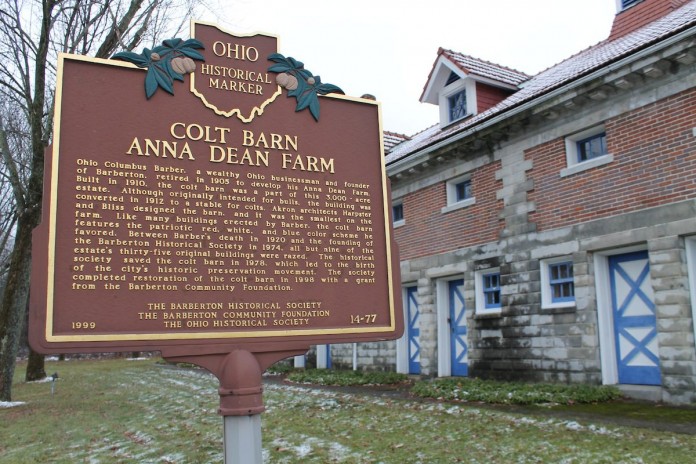
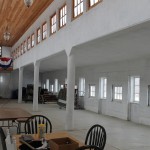
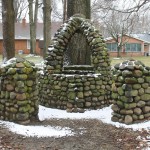
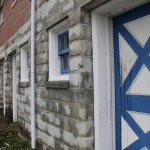
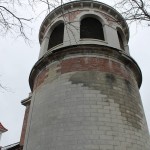
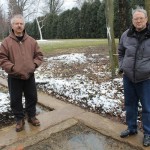
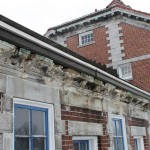
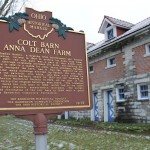
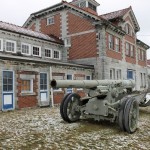




I loved this true story.I wish it wasn’t torn down. Maybe it should have been kept as he wanted. People don’t stop to see the future until it’s to late. So sad 😞. I’m sure it could have been used for something, as many people needed it place to lay their head. Most people will work with a little help from people that are better off and stop and take the truly poor into thought. They will work cheap because you are giving you are giving them that place to lay their head, a helping hand goes a long way. Back then for sure. Tell us readers your own personal opinions and thoughts please. Ty for reading my story.